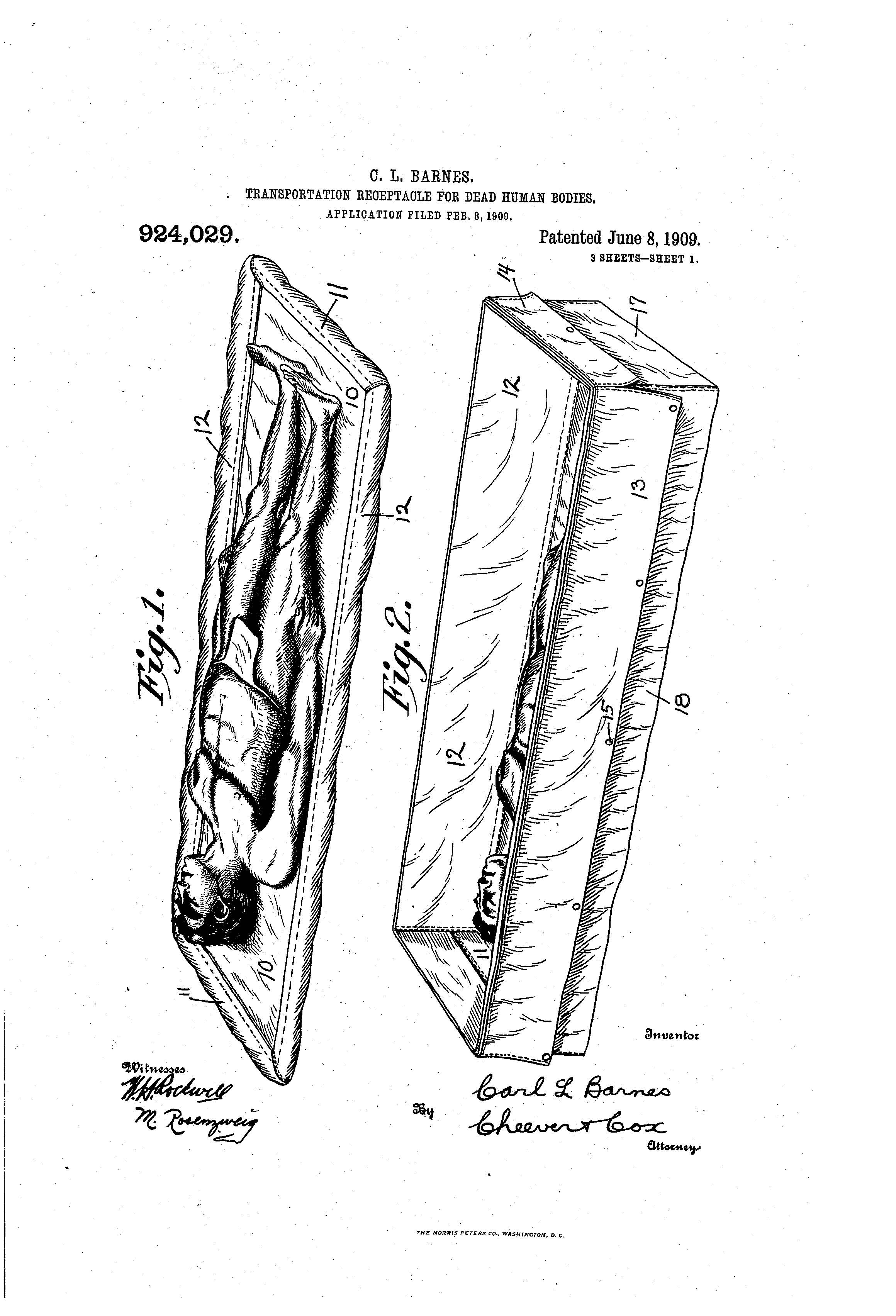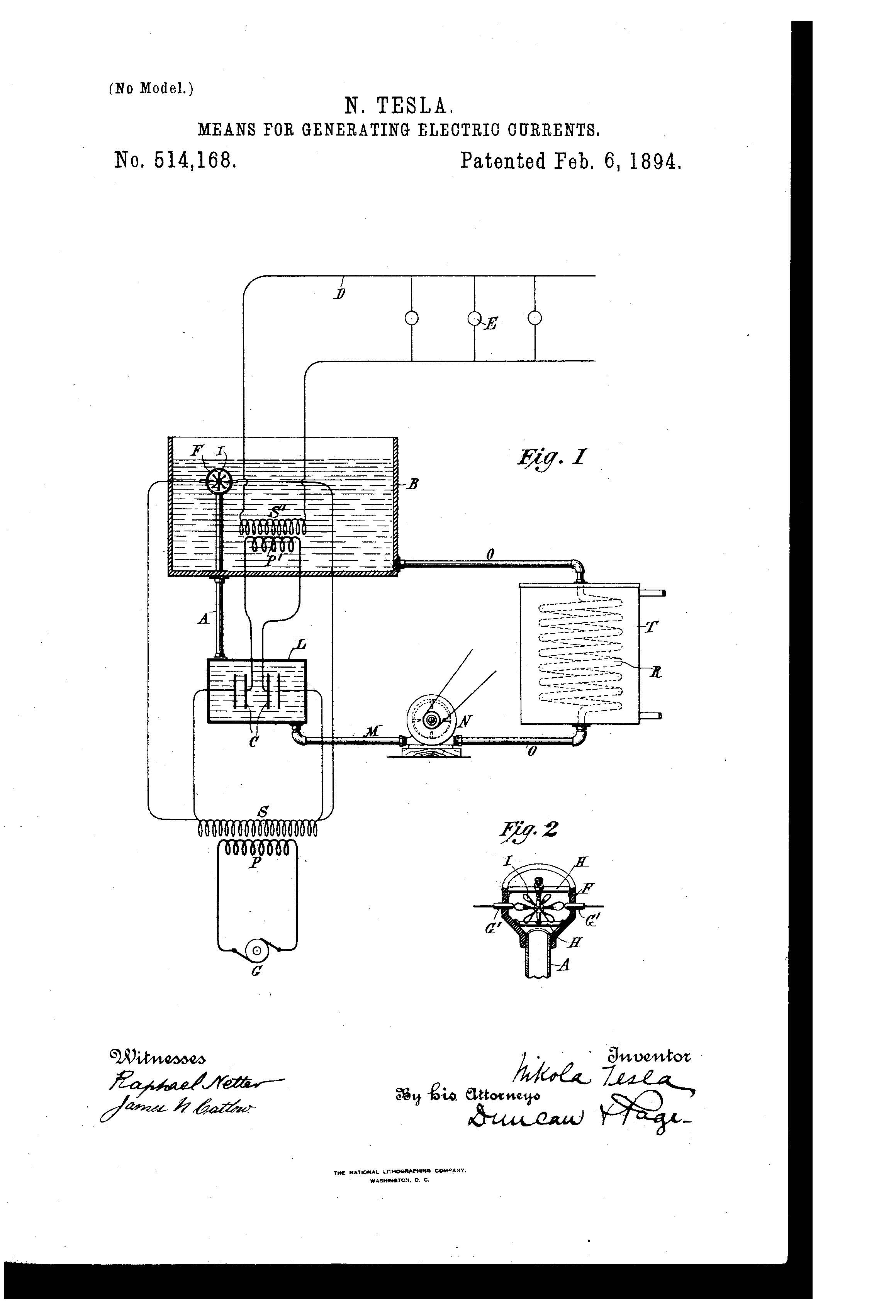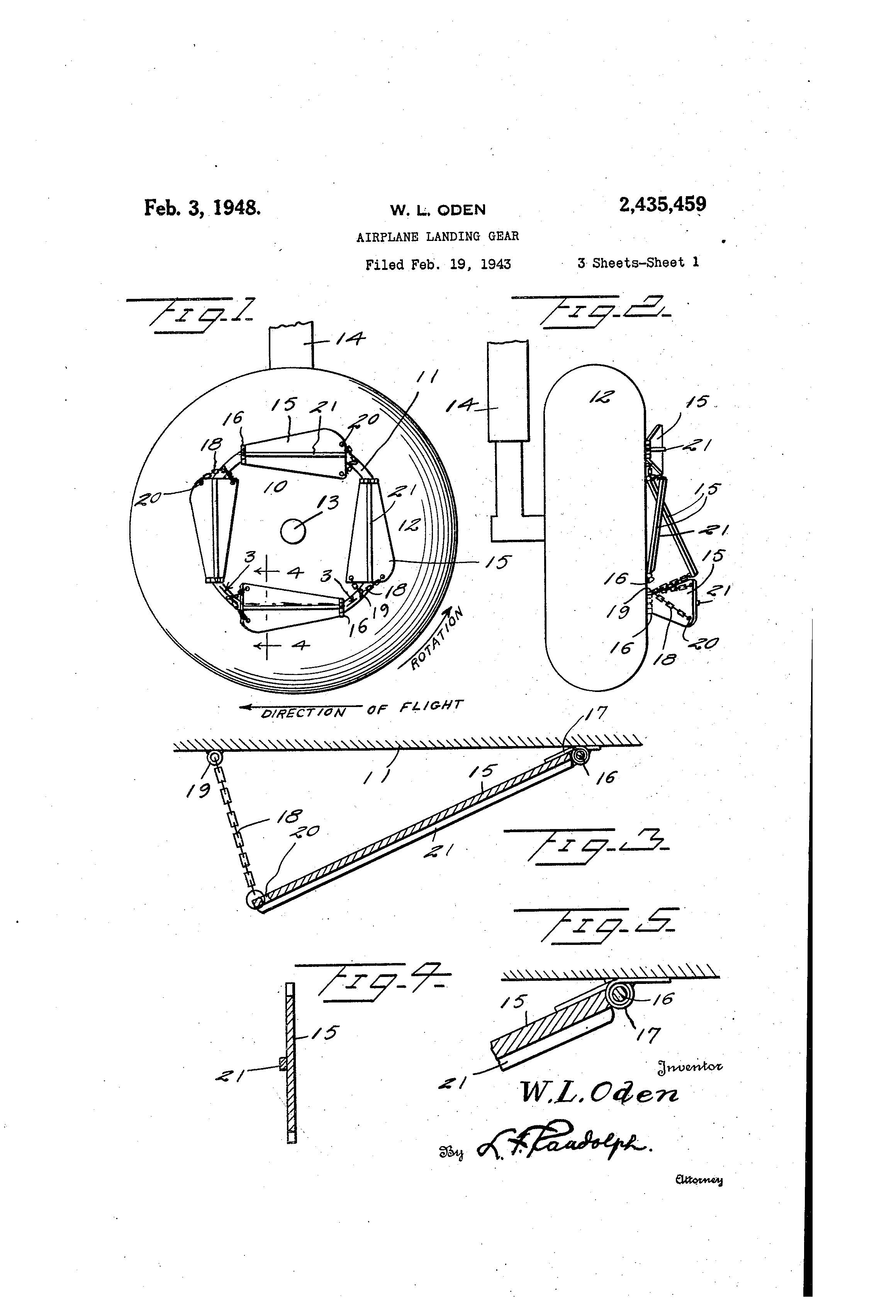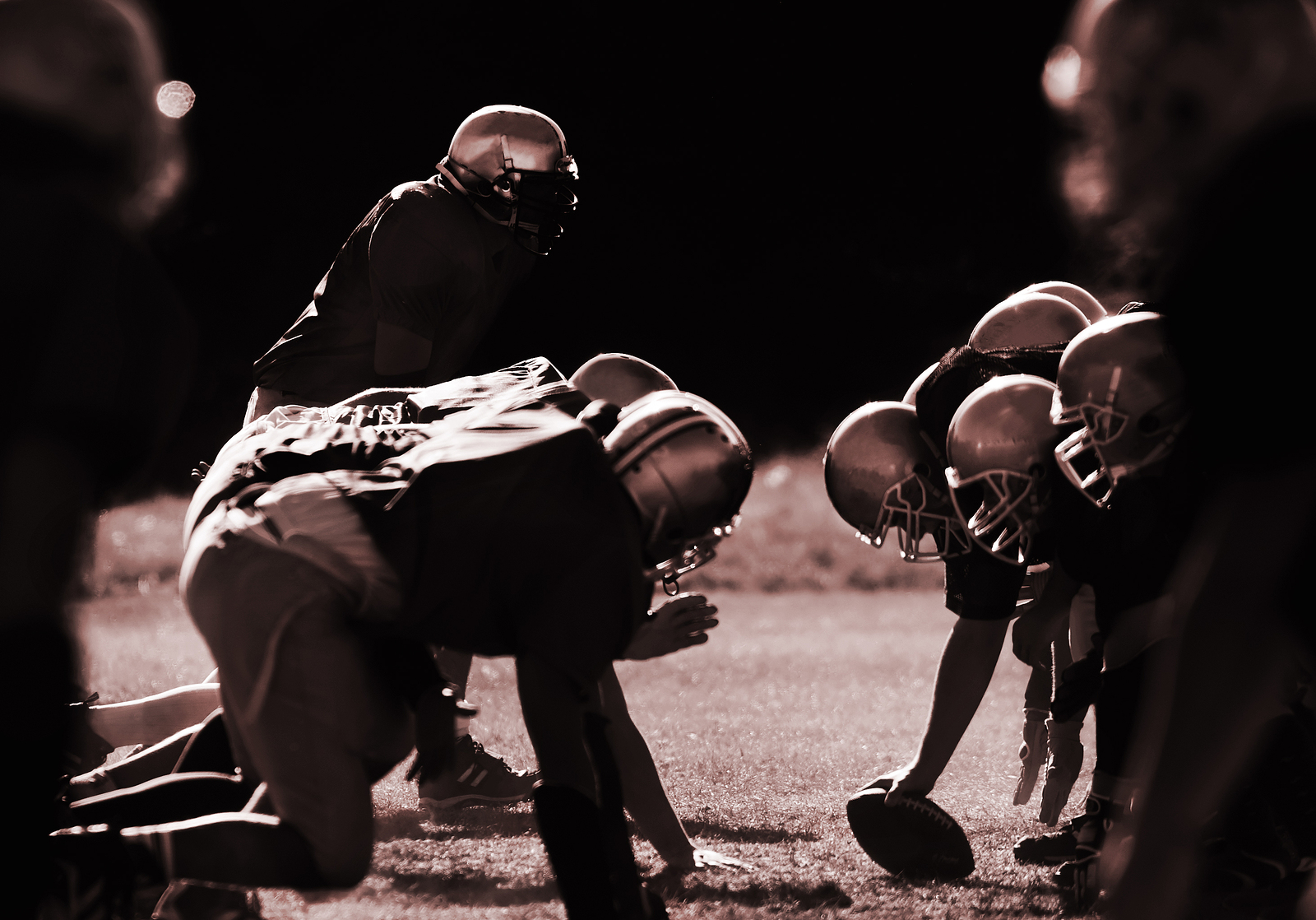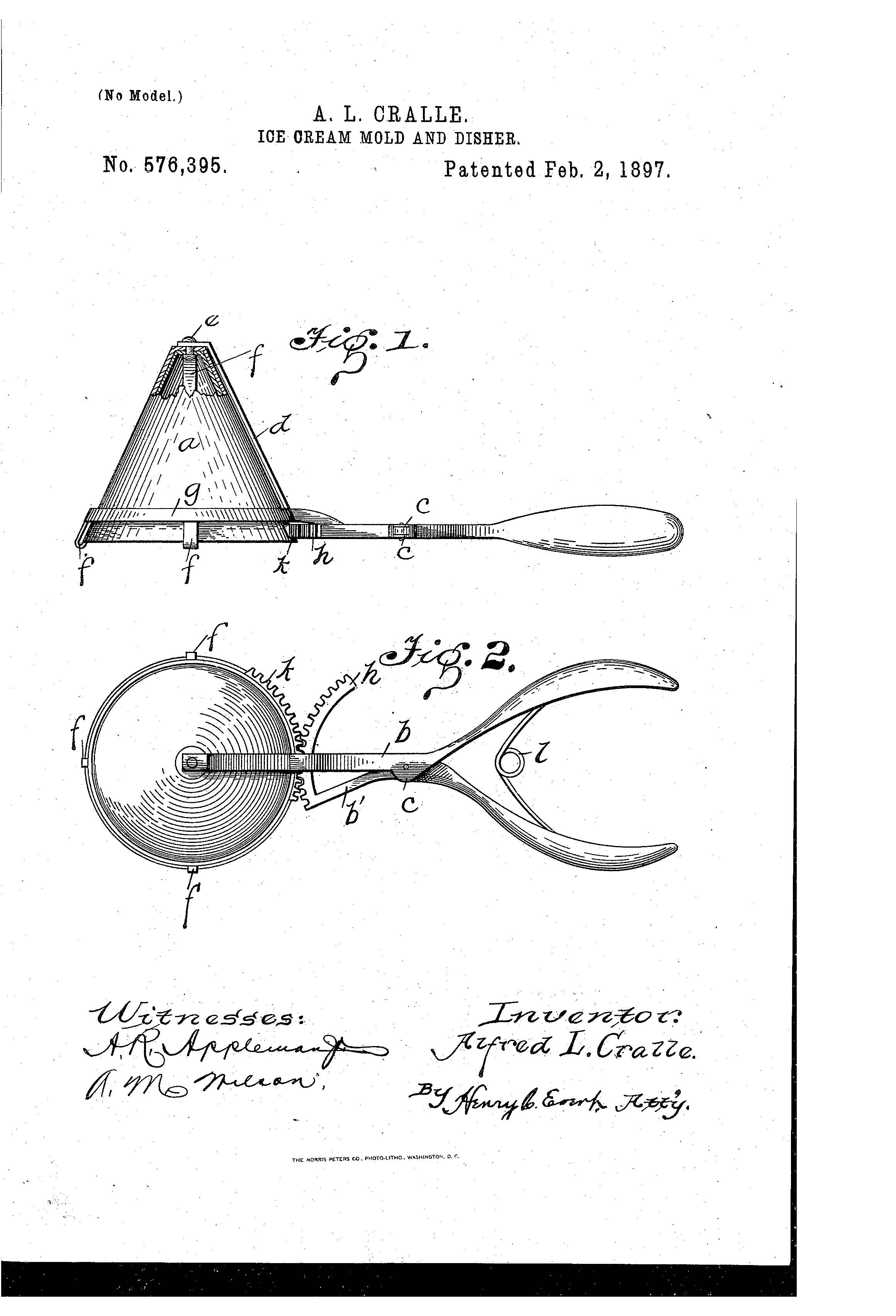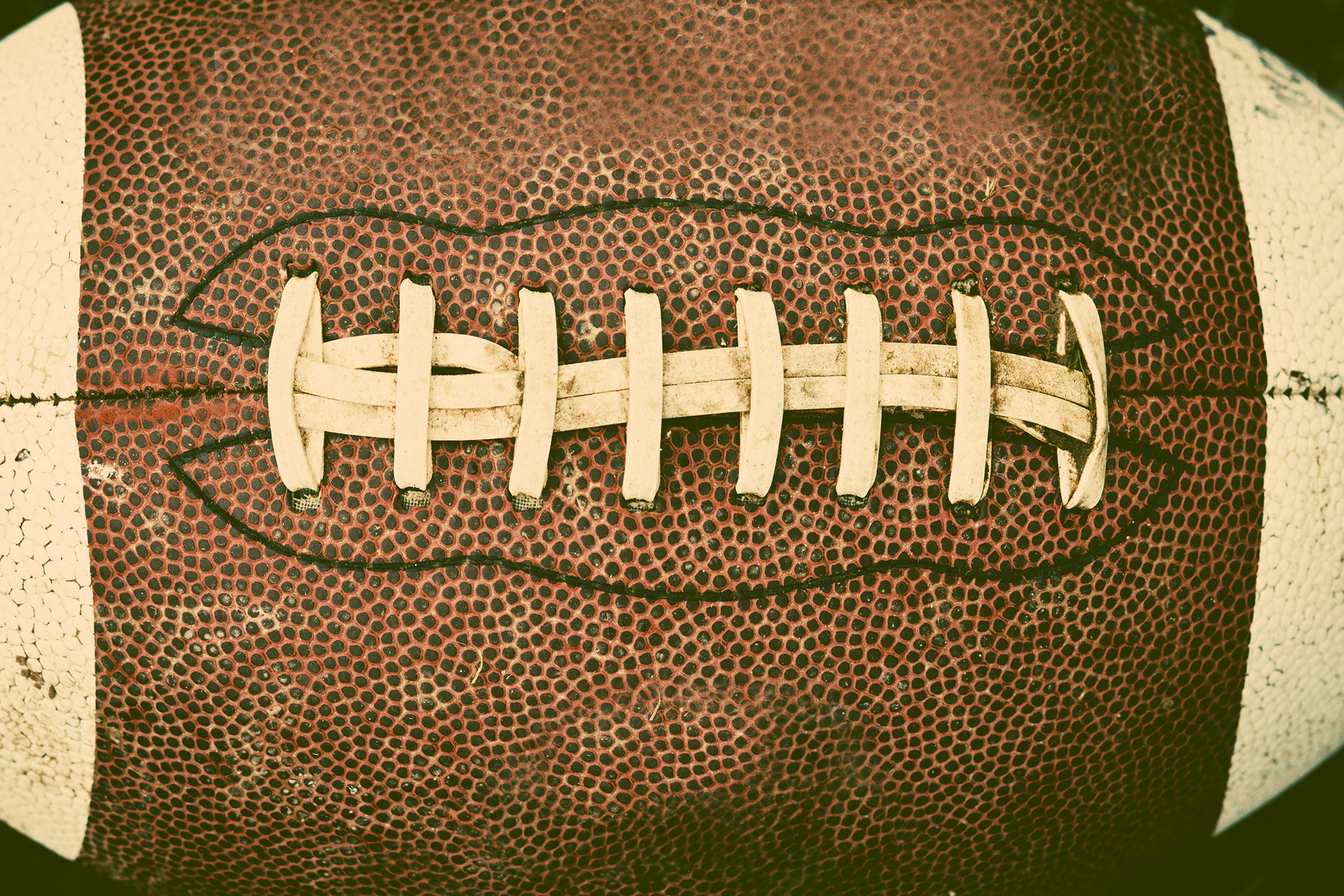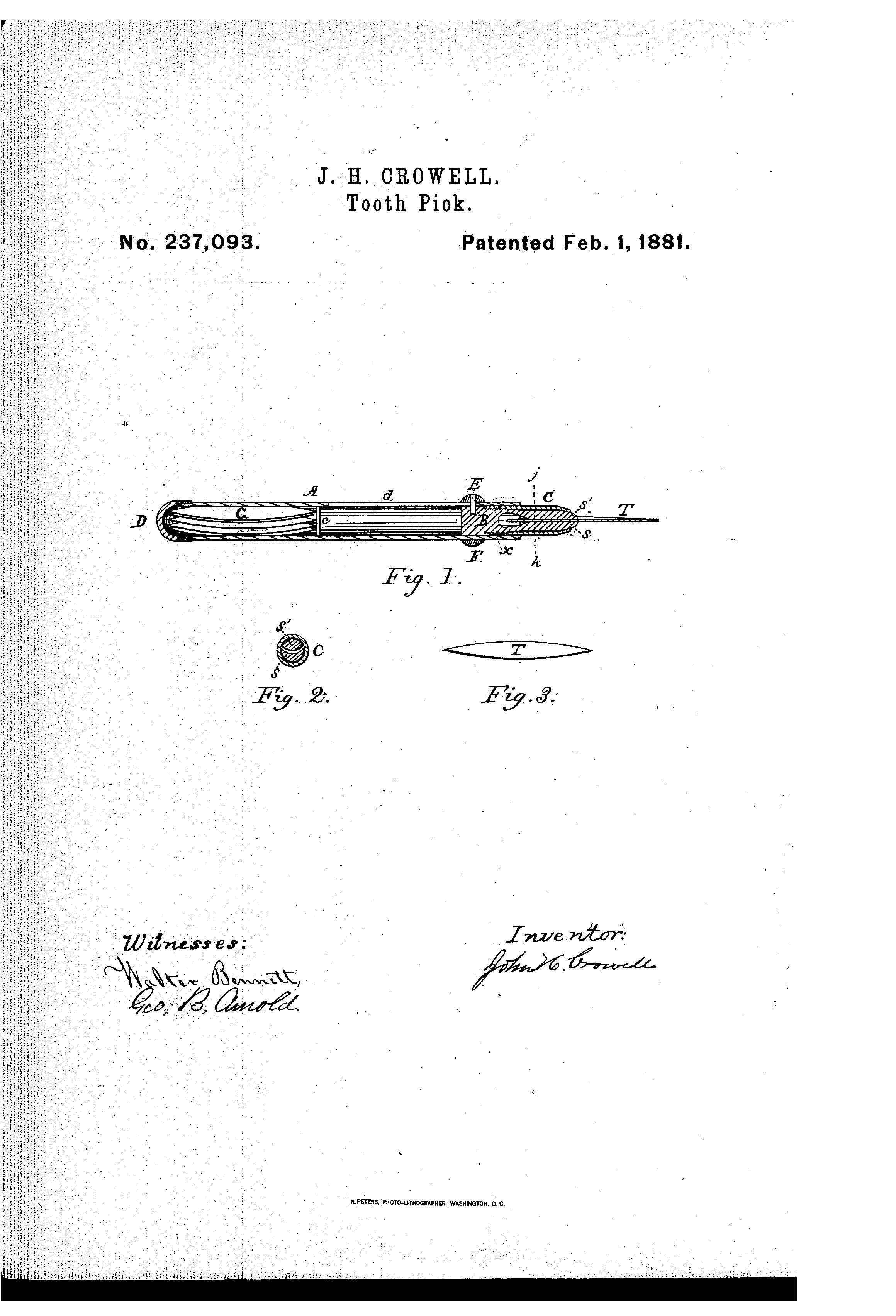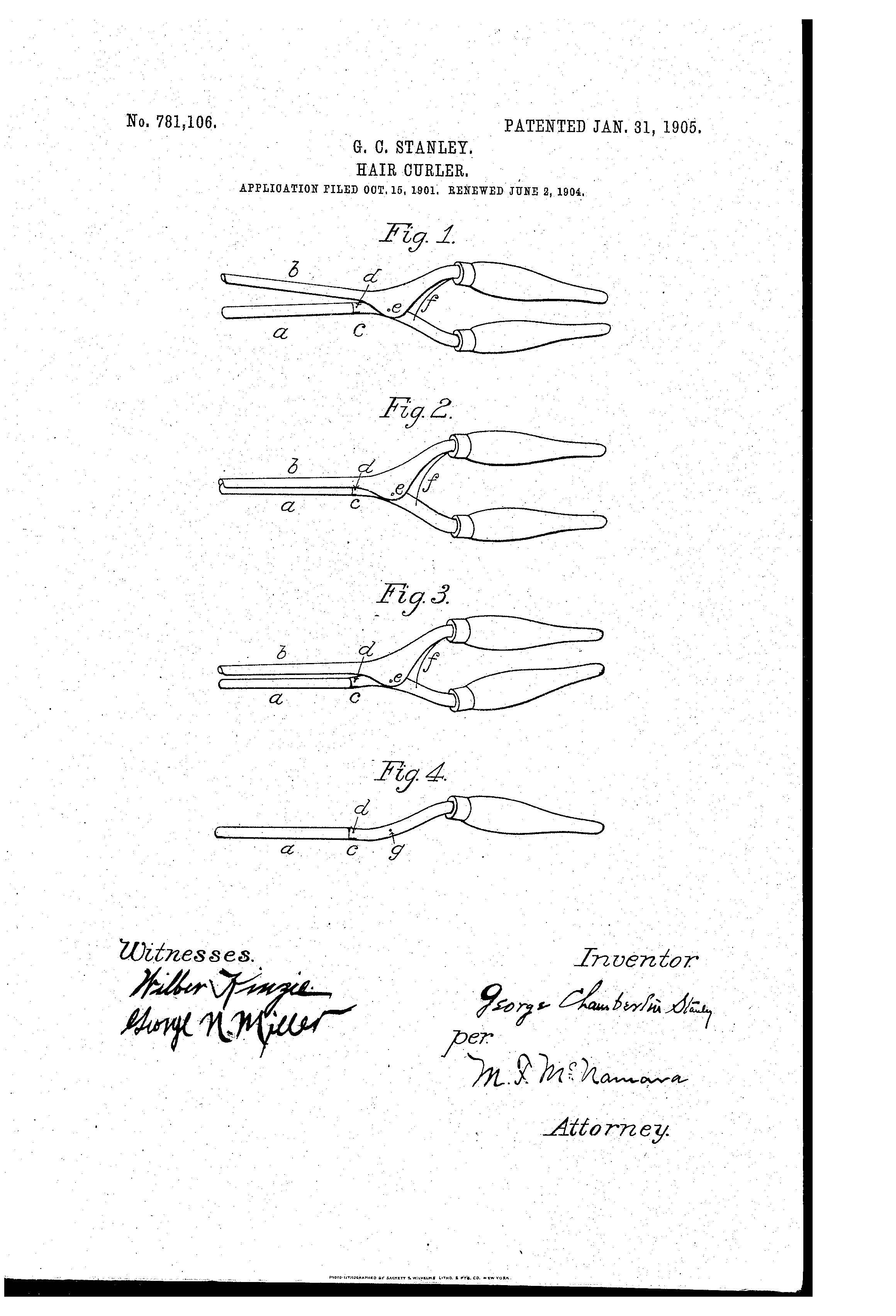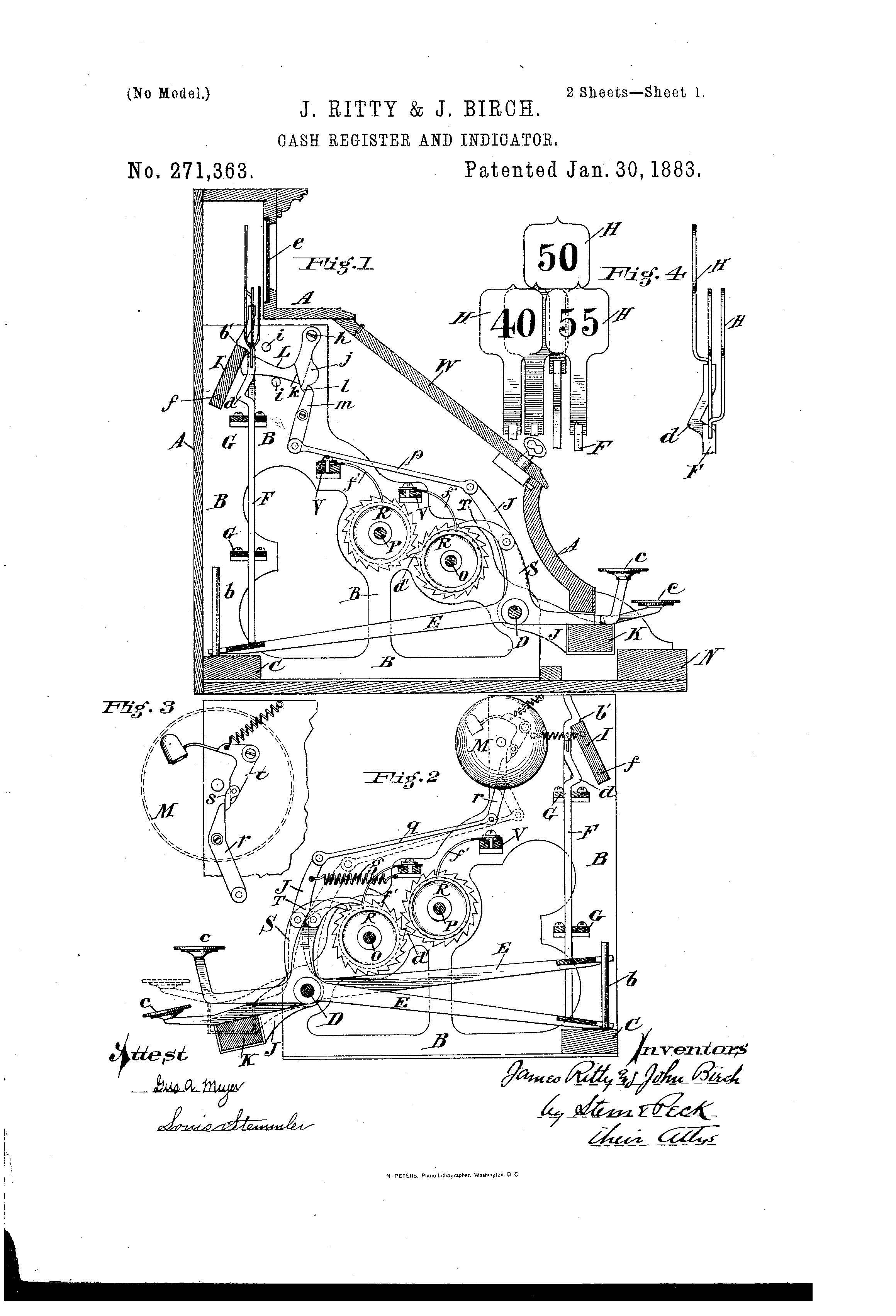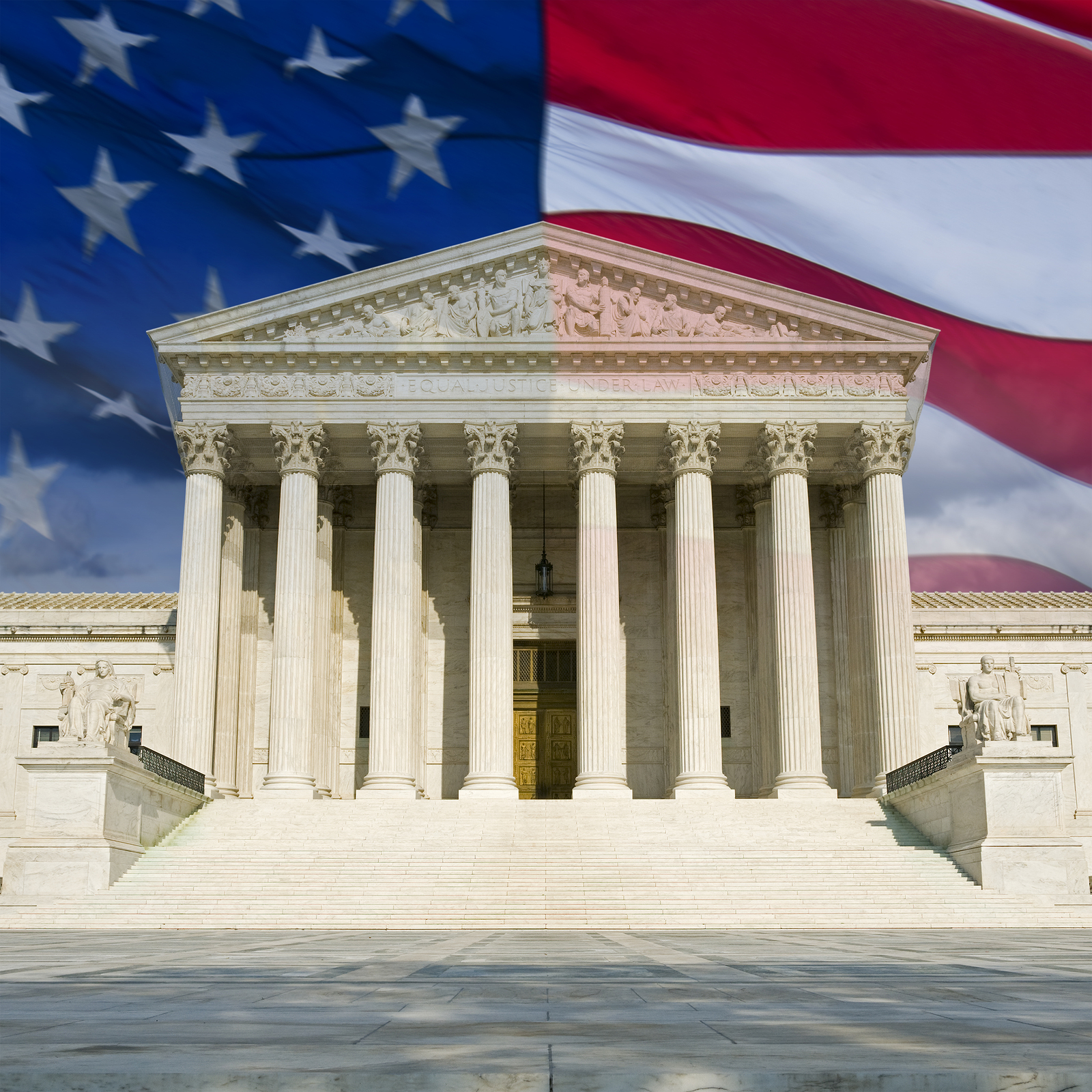Patent of the Day: Transportation Receptacle for Dead Human Bodies
On this day in 1909 Carl L. Barnes was granted the patent for TRANSPORTATION RECEPTACLE FOR DEAD HUMAN BODIES. U.S. Patent No. 924,029.
The object of the invention is to provide an air-tight receptacle of light rubber or other similar material in which the body can be conveniently packed for transportation either with or without the use of an ordinary casket as desired.
More in detail, the invention consists in such a receptacle, preferably of rubber or other similar imperforate material provided with overlapping inner flaps adapted to be folded in and secured together at their opposing edges, an imperforate sheet or wall rising from the main walls of the receptacle above said inner folded flaps, this sheet being of flexible material so that it may be gathered together and rolled over upon itself, thereby forming an effectually air-tight seal to the receptacle, this in combination with mechanism for finally sealing this imperforate supplemental sheet.



Patent of the Day: Telautograph
On this day in 1893 Elisha Gray was granted the patent for TELAUTOGRAPH. U.S. Patent No. 491,347.
This invention relates to a writing telegraph of that class in which the act of writing the message at the sending station operates to reproduce it at the receiving station, and it is in the main an improvement upon the apparatus and organization described in a former patents, particularly Nos. 461,470 and 161,472.
One of the objects of this present invention is to simplify and improve the mechanism described in said patents for giving movement to, and reversing the movement of, the receiving pen.
Another object of this present invention is to improve and simplify the paper feeding mechanism, providing improved means for giving a positive feed to the paper strip at the feeding station.








Patent of the Day: Means for Generating Electric Currents
On this day in 1894 Nikola Tesla was granted the patent for MEANS FOR GENERATING ELECTRIC CURRENTS. U.S. Patent No. 514,168.
The invention is an improvement applicable more especially to the method or system of generating and utilizing electrical energy, and which involves the maintenance of an intermittent or oscillatory discharge of a condenser or circuit of suitable capacity into a working circuit containing translating devices. In systems of this character when the high frequency of the currents employed is due to the action of a disruptive or intermittent discharge across an air gap or break at some point of the circuit, it has been found to be of advantage not only to break up or destroy the least tendency to continuity of the are or discharge, but also to control the period of the re-establishment of the same, and from investigations made with this object in view it has been found that greatly improved results are secured by causing the discharge to take place in and through an insulating liquid, such as oil, and instead of allowing the terminal points of the break to remain at a uniform distance from each other, to vary such distance by bringing them periodically in actual contact or sufficiently near to establish the discharge and then separating them, or what is the equivalent of this, throwing in and out of the gap or break a conducting bridge at predetermined intervals. To obtain the best results, moreover, it was found essential to maintain at the point of discharge a flow of the insulating medium, or, in general, such a circulation of the same as will constantly operate to cut off or break up the discharge as fast as it is established. The accomplishment of this latter result involves the employment of some mechanism for maintaining the flow or circulation of the insulating medium past the points of discharge, the advantage of the presence of such mechanism to accomplish a further and beneficial result which is the maintenance of a flow or circulation of the insulating liquid which is immersed in the converter coils used for raising the potential of the current, and also the condenser plates when such are required and used. By this means the insulating liquid surrounding the said coils and plates may be prevented from heating, either by its circulation alone or by the application to it while in motion of a cooling medium, and its requisite qualities preserved for an indefinite time.

Patent of the Day: Airplane Landing Gear
On this day in 1943 William L. Oden was granted the patent for AIRPLANE LANDING GEAR. U.S. Patent No. 2,435,459.
This invention relates to airplane landing gear and specifically to the pneumatic tires thereof.
It is particularly aimed to provide a means which will, without the application of extraneous power, cause the wheels of the landing gear to rotate in forward direction at approximately the landing ground speed of the particular airplane on which the invention is used in order to prevent the usual skidding of the wheels and tires when contact is made with the runway surface, thereby to avoid the excessive wear occasioned by such skidding, in order to prolong the life of the tires.
It also is aimed to provide constructions whereby the means which cause the rotation of the wheels or tires is collapsible but which readily will extend or expand when the wheels are projected.



“Are you ready for some football?”®

The New England Patriots and the Atlanta Falcons faceoff Sunday, February 5th, in a “Super Bowl”® that should be action packed and sure to entertain the masses—whether that be with the game itself or the highly anticipated commercials.
As excitement for Super Bowl LI builds, so does press coverage, sports books and advertisements. When watching commercials and certain coverage for the big day, have you ever noticed that you do not often hear the term “Super Bowl” used? That is because the National Football League (NFL®) has a trademark and copyright on the term as well as “Super Sunday”®. The NFL polices their trademarks vigorously and are not afraid to send a cease-and-desist letter to those who infringe on it.
Fall Creek Baptist Church in Indiana can attest to the NFL’s stringent enforcement of their trademark as they learned firsthand just how strict they are. In 2007, the NFL sent the church a cease-and-desist letter for selling tickets to a “Super Bowl” party to support their hometown team, the Indianapolis Colts. The church was shocked and canceled the party. The NFL later clarified some items in regard to the church incident. They said “Super Bowl” viewing parties are not the issue, the issue is when admission is charged to view the game and NFL and Super Bowl logos are displayed without permission; they do not want people to wrongly infer a connection.
There are certain exceptions to this rule such as “nominative fair use”, a necessary, factual reference that does not imply an endorsement or a source of goods like a television ad. Late Show host Stephen Colbert has found a comical workaround to use the term while not infringing on it. Colbert likes to use “Superb Owl”, where factual information about owls is mixed in with highlights and analysis of the big game. Another organization hosted a “souper bowl” party and asked for canned soup donations to give to the local food pantry in exchange for admittance to watch the game. Twitter and other social media platforms have popularized the use of hashtags and it would appear that using the hashtag #SuperBowl can be acceptable if used to join in a conversation and not to affiliate it with an endorsement or brand.
While many may be annoyed by the NFL’s trademark protection of “Super Bowl”, it does provide the NFL leverage to negotiate lucrative deals with those who want to be official sponsors and purchase ad space for the game. In 2010, Budweiser signed a six-year deal to be a sponsor of the “Super Bowl”; that deal cost an estimated $1 billion. They extended the sponsorship through 2022 which cost them a total of $1.4 billion. The commercials will reach over 112 million viewers and companies wanting to benefit from that large audience can purchase ad space; a 30 second ad will cost around $5 million at minimum.
With all this information and growing excitement for the big game there is just one question to be asked. “Are you ready for some football?”®¹
¹ “Are you ready for some football” trademark owner, ABC Sports, Inc., Corp.
Patent of the Day: Ice Cream Mold and Disher
On this day in 1897 Alfred L. Cralle was granted the patent for ICE CREAM MOLD AND DISHER. U.S. Patent No. 576,395.
This invention relates to certain new and useful improvements in ice-cream molds and dishers, and has for its object to construct a disher that may be conveniently operated with one hand.
The invention has for its further object to construct a disher of the above-described class that will be extremely simple in its construction, strong, durable, effectual in its operation, and comparatively inexpensive to manufacture; furthermore, a disher of this class that can be constructed in almost any desired shape mold and that will have no delicate parts to become broken or disarranged.

Patents Making Big Plays in Football

It is that time of year, “Super Bowl”® time. “Super Bowl” parties, food, and the highly anticipated commercials are all the talk, but many do not know there are a lot of patents that are a part of football's history and the big game as well. The helmet for example, has advanced significantly since the first model, said to be made of moleskin, in 1893. This first helmet was made out of necessity during the annual Army-Navy game. A Navy admiral was told he would risk “instant insanity” if he took one more hit to the head. So he had a shoemaker make him a helmet. One of the first patents for a leather helmet was granted to Allen Kennedy in 1927 for FOOTBALL HELMET (U.S. Patent No. 1,648,850). Leather helmets were in use until the 1940s, when plastic helmets were introduced by John T. Riddell, Sr. (U.S. Patent No. 2,293,308). Riddell is still one of the top leading manufacturers of helmets today. With concussions as an ever growing concern for players, helmets have become more advanced in their design and protection as well; this model, MULTILAYER AIR-CUSHION SHELL WITH ENERGY-ABSORBING LAYER FOR USE IN THE CONSTRUCTION OF PROTECTIVE HEADGEAR (U.S. Patent Application No. 2006/0059606), integrates three levels of compressible air chambers that produce a rate-sensitive response that corresponds to the force of the impact.
Rod Carey, head football coach for Northern Illinois University, said “football has always been a first-down game” and coaches and fans alike can attest to the fact that a first down can significantly impact the outcome of a game. Thanks to a 1927 patent, the standard 10-yard measurement for a first down became much easier to determine. Moses Winkler, inventor of the TEN YARD LINE (U.S. Patent No. 1,684,566), hoped his invention would prevent “ugly situations” from arising over disputed calls. It is debatable if this invention has prevented yardage disputes, but it is where we get the popular phrase “moving the chains”. A more recent invention to help officials with disputed calls is the PYLON MOUNTED CAMERA SYSTEM (U.S. Patent Application No. 2014/0063260). The pylon is fitted with a video camera, audio microphone, wireless transmitter, and battery so that sound and images from the plane of the goal line are transmitted to a receiver where they can be reviewed by officials and/or television broadcasters.
Those who prefer to view football games in the comfort of their own home were grateful when the BLENDING A GRAPHIC patent was granted (U.S. Patent No. 6,229,550). This patent displays the Virtual Yellow 1st & Ten® technology that shows where the first down lines are during the game. The Skycam™ (U.S. Patent No. 4,710,819) is another great patent that has changed the way people watch games; it allows the viewer to get a bird’s eye view without having to be at the game. If watching the game from home, why not enjoy a seat with style such as this INFLATABLE AMERICAN FOOTBALL CHAIR (U.S. Patent No. D620,268); it is equipped with footballs as hand rests and a helmet affixed to the top of the seat.
The “Super Bowl” is not only a place where diehard fans come together to cheer on their team, it is also a chance for fans to show off the fun crazy items that come with fandom. A must have for a diehard Patriots fan would be this electric guitar, LOGO GUITAR (U.S. Patent Application No. 2006/0096439), which is shaped in the likeness of the team’s logo, the so-called “flying Elvis”. This fun design patent, FOOTBALL FAN’S NOVELTY HAT (U.S. Patent No. D311,267), is a design for a hat shaped like a football and will be worn by fans all over. If fans want to get the whole family involved in the big game, this design patent, FOOTBALL INFANT BODYSUIT (U.S. Patent No. D731,755) will do nicely.
Whether you watch the game, are there for the commercials or just to sample the mouthwatering food, have fun and enjoy!
Patent of the Day: Tooth Pick
On this day in 1881 John H. Crowell was granted the patent for TOOTH PICK. U.S. Patent No. 237,093.
This invention relates to improvements in tooth-picks in which the pick, composed of quill, whalebone, or other elastic material, held by a holder, slides within a case; and the improvements are first, to provide a holder that will hold a small pick practically secure and still; and second, by having the picks small, to provide within a convenient tooth-pick case a receptacle for them.

Patent of the Day: Hair Curler
On this day in 1905 George Chamberlin Stanley was granted the patent for HAIR CURLER. U.S. Patent No. 781,106.
The object of this invention is to produce a hair-curler of the class above referred to which shall be cheap and durable in its construction and of great utility.
A second object of this invention is to produce a hair-curler from which the curls can be quickly and easily removed without breaking or tearing apart and without pulling the hair; and to that end this invention consists in the new and novel features.

Patent of the Day: Cash Register and Indicator
On this day in 1883 James Ritty and John Birch were granted the patent for CASH REGISTER AND INDICATOR. U.S. Patent No. 271,363.
This invention relates to an improvement in cash registers and indicators designed for the use of store-keepers and others as a means of accurately registering the total cash receipts for any given period of time-as a day, for instance-and for indicating to the customers that the amount paid has been registered by disclosing to their view such amounts upon figured tablets.
The arrangement of the parts and operation of the machine are such that no tablet can be exhibited without its value being counted upon the registering mechanism, and whenever any tablet is disclosed it remains so until the machine is operated to disclose a second tablet.


Supreme Court Hears Oral Arguments in Disparaging Trademark Case

The Slants, a Portland-based, Asian-American rock group was back in court Wednesday, January 18th. This time at the highest court in the land: the Supreme Court of the United States. The justices agreed to hear oral arguments in the case Lee v. Tam to decide whether or not the disparaging trademark rule of the Lanham Act violates the first amendment.
In a previous article, we discussed how the group tried to trademark their band name with the United States Patent and Trademark Office (USPTO) only to be denied under the Lanham Act. The USPTO found the group’s name would disparage, among others, “institutions, beliefs or national symbols,” specifically, people of Asian descent.
The group appealed the USPTO’s rejection, and the United States Court of Appeals for the Federal Circuit (CAFC) held that the failure to register The Slants’ trademark amounted to a violation of the First Amendment. Judge Kimberly A. Moore said even though the rejected trademarks “convey hurtful speech that harms members of oft-stigmatized communities,” the First Amendment “protects even hurtful speech.”
Justices of the Supreme Court listened to oral arguments and heavily questioned both sides starting with Deputy Solicitor General Malcolm Stewart. Stewart’s opening statements discussed why the trademark was denied and added that a copyright, which is closely tied to the first amendment, would apply sufficient intellectual property protection to the Slants.
Justice Kennedy responded to Stewart and called into question his opening statements, noting that such positions “ignore the fact that we have a culture in which we have tee shirts and logos and rock bands and so forth that are expressing a point of view. They are using the market to express views.”
Chief Justice Roberts added to Kennedy’s sentiment and stated “I’m concerned that your government program argument is circular. The claim is you’re not registering on my mark because it’s disparaging, and your answer is, well, we run a program that doesn’t include disparaging trademarks, so that’s why you’re excluded. It doesn’t seem to me to advance the argument very much.”
Justice Breyer stated “What purpose or objective of trademark protection does this particular disparagement provision help along or further?” he asked. “And I’m thinking of the provision that says you can say something nice about a minority group, but you can’t say something bad about them.”
Stewart responded that a trademark is a source identifier and not expressive in its own right and added “[a]s long as you are promoting your own product, saying nice things about people, we’ll put up with that level of distraction.”
Justice Ginsberg questioned if the applicant’s filed for “Slants are Superior” if that would be denied “[w]ould that then be take[n] outside the disparagement bar?”
When it was John Connell’s turn to speak, the justices wasted no time presenting their questions. Connell, attorney for the band’s front man Simon Tam, opened with the argument that if his client’s band were called the “Proud Asians” this case would not have amounted to anything. In regard to Justice Kennedy’s comment, Connell confirmed his position that the First Amendment should absolutely protect speech as far as trademarks are concerned.
Justice Sonia Sotamayor, a trademark specialist in private practice, told Connell, “[n]o one is stopping your client from calling itself The Slants. No one is stopping them from advertising themselves that way.” Sotomayor further stated that this trademark application is almost “asking the government to endorse your name to the extent of protecting it.”
Connell stated that the denial of the trademark was a burden to his client because he was “denied the benefits of legal protections that are necessary for him to compete in the marketplace with another band.”
Justice Sotomayor countered that “[h]e can still compete. He’s just not getting as much as he would like, but he’s not stopped from doing what he’s doing.”
Chief Justice Roberts told Connell “it seems to me that you’re defining the government program differently than the government would.”
Connell respectfully disagreed and stated that the Lanham Act is not clear and its purpose is to reduce “consumer confusion and the protection of the goodwill of the mark holder. “
The case was submitted and a decision is expected to be issued prior to the court’s term in in June.
To read the arguments in its entirety click here.
Patent of the Day: Self Feeding Paint Brush
On this day in 1914 James Allan was granted the patent for SELF FEEDING PAINT BRUSH. U.S. Patent No. 1,085,234.
OThis invention relates to improvements in and relating to self feeding paint brushes and has for its object to more effectually effect the distribution of the paint on the article to be painted and also to prevent any loss of paint and to obtain a better and more uniform surface thereof.



